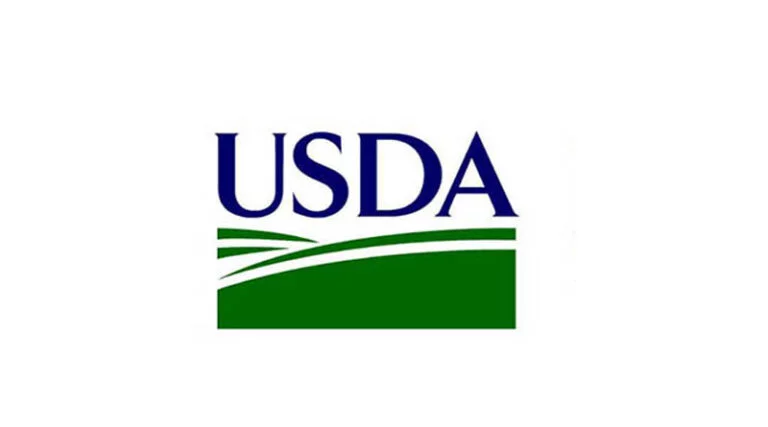
USDA Offers Disaster Assistance to North Carolina Farmers Affected by Tropical Storm Chantal
23 July 2025, North Carolina: The United States Department of Agriculture (USDA) has announced the availability of comprehensive disaster assistance for farmers and livestock producers in North Carolina, following the significant damage caused by Tropical Storm Chantal and associated extreme weather conditions.
The USDA has mobilized both technical guidance and financial aid to support affected agricultural operations in their recovery efforts. “USDA has a suite of programs to support farmers and ranchers as they recover from disasters,” said Brooke Appleton, Deputy Under Secretary for Farm Production and Conservation. “Impacted producers should contact their local USDA Service Center to report losses and learn about the options available to support recovery from crop, land, infrastructure, and livestock damage.”
Key USDA Disaster Assistance Programs
Livestock Indemnity Program (LIP)
Livestock producers who have experienced above-normal mortality or have been forced to sell injured livestock at a loss may be eligible under LIP. To qualify, producers must document livestock losses due to eligible adverse weather events and file a notice of loss with the USDA Farm Service Agency (FSA) by March 2, 2026, for losses in the 2025 calendar year.
Emergency Assistance for Livestock, Honeybees, and Farm-Raised Fish (ELAP)
ELAP provides financial compensation for feed and grazing losses. Affected producers must submit both a notice of loss and a payment application to their local FSA office by the same deadline—March 2, 2026.
Tree Assistance Program (TAP)
Eligible orchardists and nursery tree growers can access cost-share support to replant or rehabilitate trees, bushes, or vines damaged by the storm. Applications must be filed within 90 days of the disaster or once the damage is evident. TAP works in conjunction with the Noninsured Crop Disaster Assistance Program (NAP) or crop insurance. “Timely reporting of all damages is critical,” said Ronald Garrett, FSA State Executive Director for North Carolina. “Producers should gather relevant documents, such as farm records, livestock inventories, receipts, and photographic evidence of losses.”
Additional Financial Tools
The USDA also offers direct and guaranteed farm loans, including emergency loans for producers in primary or contiguous disaster-designated counties. These loans may cover replacement of essential property, livestock purchases, feed and seed inputs, family living costs, and refinancing of farm-related debt.
For borrowers struggling to meet farm loan repayment obligations due to circumstances beyond their control, USDA offers various loan servicing options.
Farm Storage Facility Loan Program (FSFL)
Low-interest financing is available to repair, replace, or build on-farm storage structures. FSFL loans can range in term from 3 to 12 years. Producers who suffered infrastructure damage under this program should contact both their insurance provider and local USDA Service Center.
Crop Insurance & Risk Management
Producers with NAP coverage must notify their FSA office within 15 days of detecting crop damage, or within 72 hours for hand-harvested crops. Similarly, those with Federal Crop Insurance should report losses to their insurance agent within 72 hours, followed by written notice within 15 days. “USDA’s risk management programs are essential tools to safeguard farm operations against unexpected natural disasters,” said Kevin Wooten, Director of USDA’s Risk Management Agency (RMA) for the region. “Our team and insurance providers are ready to assist producers with claims and recovery.”
Conservation and Land Restoration
The USDA’s Emergency Conservation Program (ECP) and Emergency Forest Restoration Program (EFRP) offer funding and technical support to restore damaged farmland, fences, and forests, and to remove debris affecting feed and water sources.
In parallel, the Natural Resources Conservation Service (NRCS) provides on-ground support to plan and implement conservation practices via the Environmental Quality Incentives Program (EQIP). “NRCS is committed to helping landowners through recovery with tailored conservation strategies,” said Timothy Beard, NRCS State Conservationist for North Carolina. “Our experts will assess damage and guide producers in building long-term land resilience.”
Also Read: Verdesian Life Sciences Appoints RK Goyal as Head of Asia Commercial Operations
📢 If You’re in Agriculture, Make Sure the Right People Hear Your Story.
From product launches to strategic announcements, Global Agriculture offers unmatched visibility across international agri-business markets. Connect with us at pr@global-agriculture.com to explore editorial and advertising opportunities that reach the right audience, worldwide.






